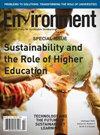美国宾夕法尼亚州马塞勒斯页岩地区非常规和常规油气开发对景观的干扰
IF 3.9
4区 环境科学与生态学
Q1 ENVIRONMENTAL SCIENCES
引用次数: 31
摘要
从2004年到2010年,美国宾夕法尼亚州Marcellus页岩地区的非常规(水力压裂)和常规油气开发的空间足迹通过高分辨率、正射影校正、数字航空摄影进行了数字化。我们使用这些数据来测量油气开发的空间范围,并评估研究区域内流域现有自然资源的暴露程度。我们发现,这两种发展形式:(1)在划定研究区域的930个流域中,约有50%发生了这种发展形式;(2)约50%的流域离溪流较建议安全距离近;(3)在距离受损溪流和国家规定的野生鳟鱼溪流较近的一些地方,比推荐的安全距离更近;(4)在地表饮用水取水点上游10公里范围内,有地表饮用水取水点的流域占45%;(5)发生在国家规定的特殊价值流域的10%左右;(6)发生在约30%的流域,其常住人口被定义为不成比例地暴露于污染物;(7)多发生在林内;(8)约30%的非常规油气开发点3公里范围内有100万居民。此外,我们发现,与非常规油气开发相比,常规油气开发对景观干扰的潜在影响更为普遍。本文章由计算机程序翻译,如有差异,请以英文原文为准。
Landscape Disturbance from Unconventional and Conventional Oil and Gas Development in the Marcellus Shale Region of Pennsylvania, USA
The spatial footprint of unconventional (hydraulic fracturing) and conventional oil and gas development in the Marcellus Shale region of the State of Pennsylvania was digitized from high-resolution, ortho-rectified, digital aerial photography, from 2004 to 2010. We used these data to measure the spatial extent of oil and gas development and to assess the exposure of the extant natural resources across the landscape of the watersheds in the study area. We found that either form of development: (1) occurred in ~50% of the 930 watersheds that defined the study area; (2) was closer to streams than the recommended safe distance in ~50% of the watersheds; (3) was in some places closer to impaired streams and state-defined wildland trout streams than the recommended safe distance; (4) was within 10 upstream kilometers of surface drinking water intakes in ~45% of the watersheds that had surface drinking water intakes; (5) occurred in ~10% of state-defined exceptional value watersheds; (6) occurred in ~30% of the watersheds with resident populations defined as disproportionately exposed to pollutants; (7) tended to occur at interior forest locations; and (8) had >100 residents within 3 km for ~30% of the unconventional oil and gas development sites. Further, we found that exposure to the potential effects of landscape disturbance attributable to conventional oil and gas development was more prevalent than its unconventional counterpart.
求助全文
通过发布文献求助,成功后即可免费获取论文全文。
去求助
来源期刊

Environment
环境科学-环境科学
CiteScore
5.10
自引率
0.00%
发文量
0
审稿时长
>36 weeks
期刊介绍:
Now in its 60th year of publication, Environment: Science and Policy for Sustainable Development analyzes the problems, places, and people where environment and development come together, illuminating concerns from the local to the global. More readable than specialized journals and more timely than textbooks, Environment offers peer-reviewed articles and commentaries from researchers and practitioners who provide a broad range of international perspectives. This ISI-rated magazine also features in-depth reviews of major policy reports, conferences, and environmental education initiatives, as well as guides to the best Web sites, journal articles, and books.
 求助内容:
求助内容: 应助结果提醒方式:
应助结果提醒方式:


